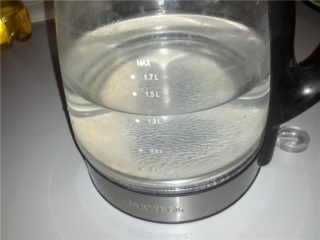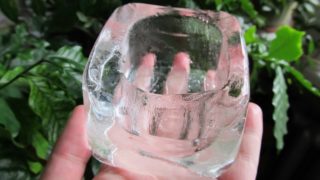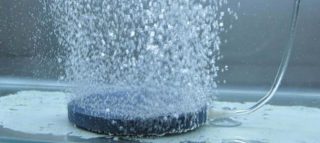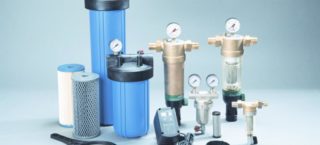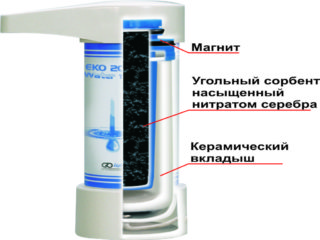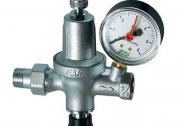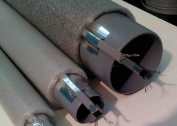Human health and well-being depends on the quality of drinking water. And if the utility specialists take care of the centralized resource, then the fluid from the well requires the attention of its owner. Especially if it is rich in dissolved salts of magnesium and calcium. To purify lime water from a well, simple folk methods or good filtering systems can be used.
Harmful water with lime
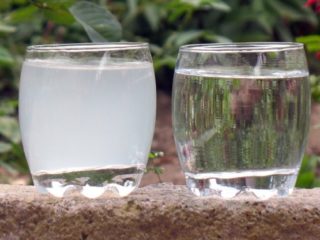
Lime in a liquid is the salts of magnesium and calcium dissolved in it. The higher their concentration, the stiffer the downhole resource in a country house or in the country. The use of such a liquid is harmful for both humans and household appliances, water supply lines. Hard water causes such troubles:
- provokes the formation of kidney stones in humans;
- disrupts metabolic processes in the body;
- provokes the appearance of acne;
- makes skin and hair dry;
- leads to the formation of limescale (scale) in the kettle, boiler, utensils, heating system.
In addition, calcium and magnesium salts do not have the best effect on pumping equipment.
Cleaning methods
Since water with lime from a well is hazardous to health, it is possible to deal with dissolved salts of calcium and magnesium in several commonplace ways
Upholding
Water must be collected in a container and left overnight. During this time, any dissolved and suspended particles (sand, iron, salts) settle to the bottom. In the morning you need to carefully, without shaking the container, drain the upper 2/3 of the liquid from it. It is usable. The precipitate is disposed of.
The settling method is good for preparing small volumes of liquid. As the main water supply for the whole family, it is not suitable.
Boiling
Another standard lime control method. Boiling water for 10 minutes provokes the precipitation of all dissolved salts. But the minus of the method is the formation of scale on the walls of the dishes. It is difficult to clean it later. Large volumes of the resource cannot be prepared in this way, therefore, using boiling, it is possible to process only that water that is used in food.
As a means of getting rid of scale, ordinary citric acid is used.
Freezing
To get rid of lime in the water from the well, a container of liquid should be placed in the freezer. It is advisable to use a pan for this. All organic and inorganic litter freezes in the center of the ice. Therefore, the formed frozen volume is placed in a large basin and a hot stream is poured into its center. The epicenter with pollution melts, and the remaining ice can be melted and consumed.
The freezing method is very time-consuming and unsuitable for processing large volumes of well fluid.
Coagulation
Water purification from lime from the well is based on the use of coagulant chemicals. They bind the molecules of dissolved salts, bring them into suspension. Later particles of visible lime are removed by mechanical filtration.
As a coagulant for hard water, a 0.25% concentration polyacrylamide solution is most often used. In everyday life, this method is practically not used due to the need for special cameras.
Aeration
When oxygen enters water, molecules of calcium and magnesium salts are oxidized. As a result, they precipitate. Aeration is performed in two ways:
- Pressureless. The liquid is fed into the tank using a spray gun as a shower head.
- Pressure head.Water is drawn into the flask and oxygen is supplied to it through a compressor under pressure.
Ozonation is also carried out on the same principle.
Filters for cleaning
You can get rid of dissolved salts of magnesium and calcium using good filters. Reverse osmosis systems, coal, etc., fully cope with the task.
Mechanical filter
It implies two degrees of purification - coarse and fine. The first is placed at the water intake point. The mesh design of the coarse filter retains larger impurities of 400 microns or more. Such installations are also called mud collectors.
Next mount a fine filter. It already removes the smallest particles of impurities. If the liquid is preliminarily enriched with ozone or oxygen, such plants can cope with its purification from lime.
Carbon filter
Equipment with granular sorption bookmarks performs well water purification from dissolved salts of magnesium and calcium. Activated or charcoal is used as backfill. Their small pores confidently retain lime. In order for the filters to work fully, you need to regularly change the bookmarks in them.
Electromagnetic installation
Water is passed through an electromagnetic field. As a result, dissolved salts lose the ability to convert to lime. More often such installations are used for industrial purposes.
Membrane Filter (Ultrafiltration)
Water from a well or well with impurities of dissolved salts passes through the membrane under high pressure. As a result, the barrier passes only liquid molecules, but not external impurities. Membrane filters can be used both in everyday life and in production. It is important to regularly replace the mesh barrier.
Reverse Osmosis Systems
Such filters consist of several flasks with different loads in them. Water during reverse osmosis treatment passes several degrees of purification. Sometimes it is additionally enriched with useful trace elements.
The principle of operation of the reverse osmosis filter is as follows:
- the liquid passes through a semipermeable membrane, which effectively retains any impurities;
- water goes to coal filtration and enrichment;
- all screened waste is discharged into the sewer.
Filters based on reverse osmosis are placed under the sink with a separate tap for drinking water. For use at home, this is the best option.
To maintain the effectiveness of reverse osmosis systems, regularly flush or replace diaphragms, fillings, and cartridges with your own hands. You need to get rid of used components in the usual household way. An exception is ion exchange resin, with which it is possible to clean dirty well fluid.
Filters for well water need to be selected only after a fluid analysis. Based on the indicators, it is possible to precisely determine which impurities need to be fought.
